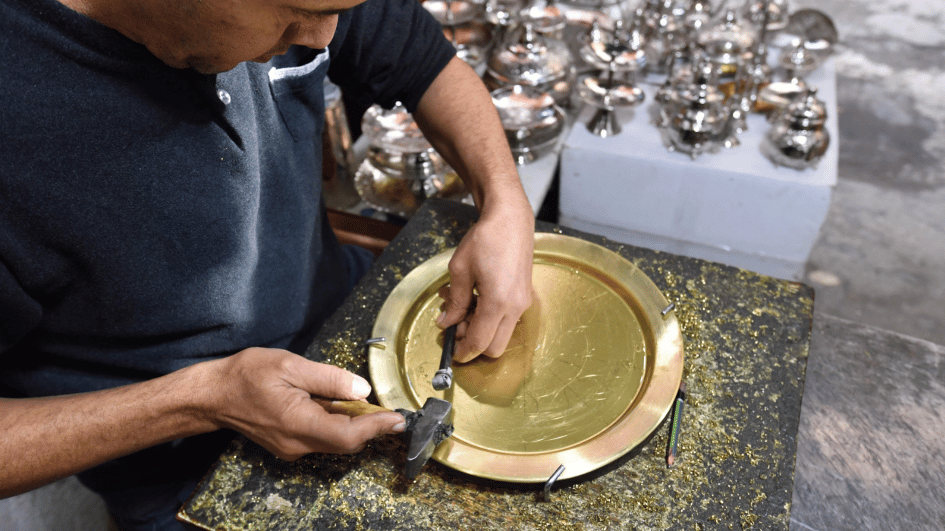UNESCO listing brings new shine to North African metal art
TUNIS

Mohamed Amine Htiouich began honing his metal engraving skills as a teenager. Now the 37-year-old Tunisian is training the next generation in the ancient art, recently recognized by UNESCO.
Htiouich first worked on copper, then silver and finally gold at the family's workshop in the old medina of Tunis.
Two decades later, he offers free apprenticeships to young enthusiasts in the art of manually cutting words or symbols into jewelry and household objects, a craft often passed down from father to son.
"I don't want to see this tradition disappear," said Htiouich. "I'm afraid that one day there will be no succession."
The long-standing tradition, which has been practiced across North Africa and the Middle East for centuries, was added last month to UNESCO's intangible heritage list.
While it is gaining recognition abroad, local artisans regret that metal engraving remains undervalued at home and suffers from a lack of government support.
The UNESCO designation "commits us to preserving this exceptional know-how", said Imed Soula, a Tunisian artisan who helped get engraving nominated for the list.
Soula told AFP that local craftsmen were "inspired by the aesthetic, religious and cultural references of their societies" when creating the exquisite works.
At his workshop in the Den Den suburb of Tunis, Chiheb Eddine Ben Jabballah often teaches the craft to women looking to make jewelry or baskets with chiseled-copper ornaments.
The 68-year-old, who also heads Tunisia's national chamber of craftsmen, has trained hundreds of engravers over a career spanning five decades.
But he said the apprenticeships are often too short, lasting only three months.
"It takes at least two years to learn all the techniques of engraving," he explained of the craft, which dates back to the Carthaginians.
The large variety of techniques stems from the intermingling of Islamic civilization and Mediterranean traditions, along with indigenous Amazigh heritage and Far Eastern influences.
Proud of his rich profession, Ben Jabballah regretted however that it had become "little valued" at home.
In Morocco, artisan Abdelilah Mounir believes the UNESCO designation will "help on the tourism and commercial level."
"It is good international publicity," said Mounir, who sells copper items in the northern city of Fez.
But for Mohamed Moumni, a jeweller from the northwestern city of Sale, demand is not the issue in Morocco, a popular tourist destination with renowned craftsmanship.
"The problem is the scarcity of people who know how to do it. We can no longer find craftsmen," he said.
'Magnificent trade'
In Libya, thrown into chaos since the fall of dictator Moamer Kadhafi in 2011, artisans complain of a crippling lack of support.
"There's very little development of the craft," said Youssef Chouchine, 60, one of the few remaining craftsmen in Tripoli's medina.
Without assistance from authorities, "it's only demand that keeps the craftsmen going," Chouchine said.
"The majority of old craftsmen have left the trade already... It's not a good situation," he added.
Public initiatives are also few and far between in Algeria, but engraved metal remains in high demand.
Each region has its specialty, including gold jewelry in Tlemcen and silver rings, necklaces and bracelets - sometimes embellished with coral - in Kabylia and Aures.
"It's a magnificent trade," said Walid Sellami, a 37-year-old jewelry designer from Algiers.
"You don't need to talk to people to make sales. They can see the jewelry for themselves," he added from his little workshop.
Sellami learned his craft from the internet after finding no available training in his city.
The UNESCO designation "won't change much," he said.
Still, he is "happy and proud" that the ancestral custom has now gained more recognition.
















